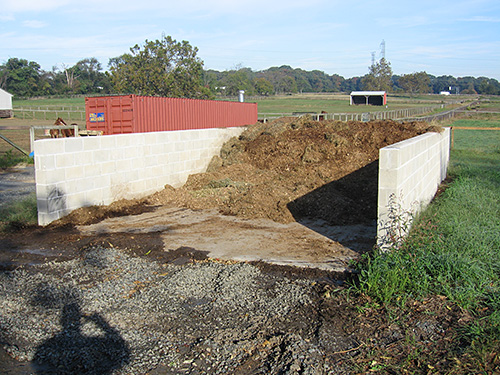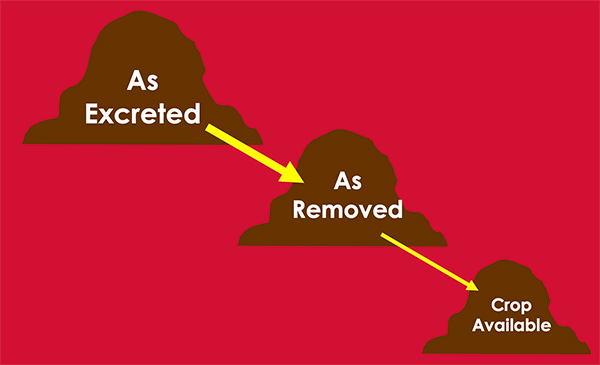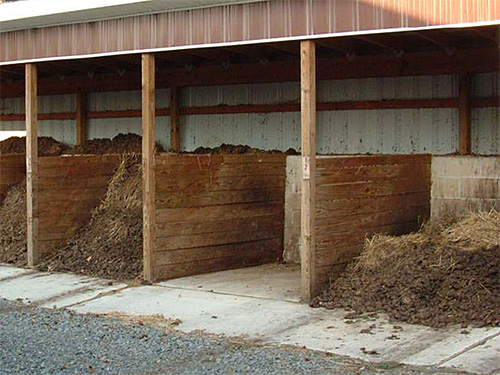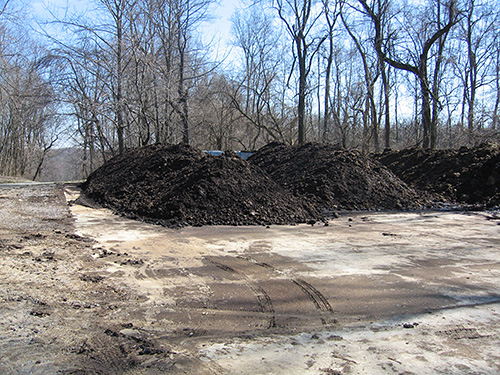
Each farm should have a plan for managing manure including collection, storage, spreading, and disposal. To reduce the amount of manure runoff, cover stockpiled manure and bedding, especially during high rainfall periods. Direct all ‘clean’ roof runoff and land runoff away from animal barnyards or pastures.
Develop a Manure-Handling System
- Collect and store untreated runoff and seepage from manure storage areas
- Store manure and bedding waste before it is spread on fields
- Apply and incorporate manure; spreading rates to be determined by soil testing results
- Manure should not be spread on fields when soil is frozen; soil should be firm enough to prevent tractors and spreaders from packing the soil, and dry enough to avoid manure runoff
- Allow manure to be applied to pastures or crops to meet the plants’ fertilizer needs; to prevent seepage into underground water supplies, avoid applying too much manure
- Manure can be disposed off site where it will be beneficially utilized
Where to Store Manure
Store manure in a dry, level, impermeable location, free from storm-water runoff, and out of the foodplain. Manure can be composted for better use as a soil amendment.
- Structure with a cover or roof
- Tarp may provide cover with less cost and more labor
- Stack or stockpile in a well-drained area for later hauling
- Drainage from storage should be channeled into a vegetative buffer
- Regulations may require runoff controls
Well Managed Manure
- Contains organic matter and improves water-holding capacity, improving the soil.
- Provides plant nutrients for growing crops and pastures
- Supplements or replaces commercial fertilizers
- Can be sold as a farm product if properly composted
- Can be used to recycle carbon in the soil and reduce carbon in the air




